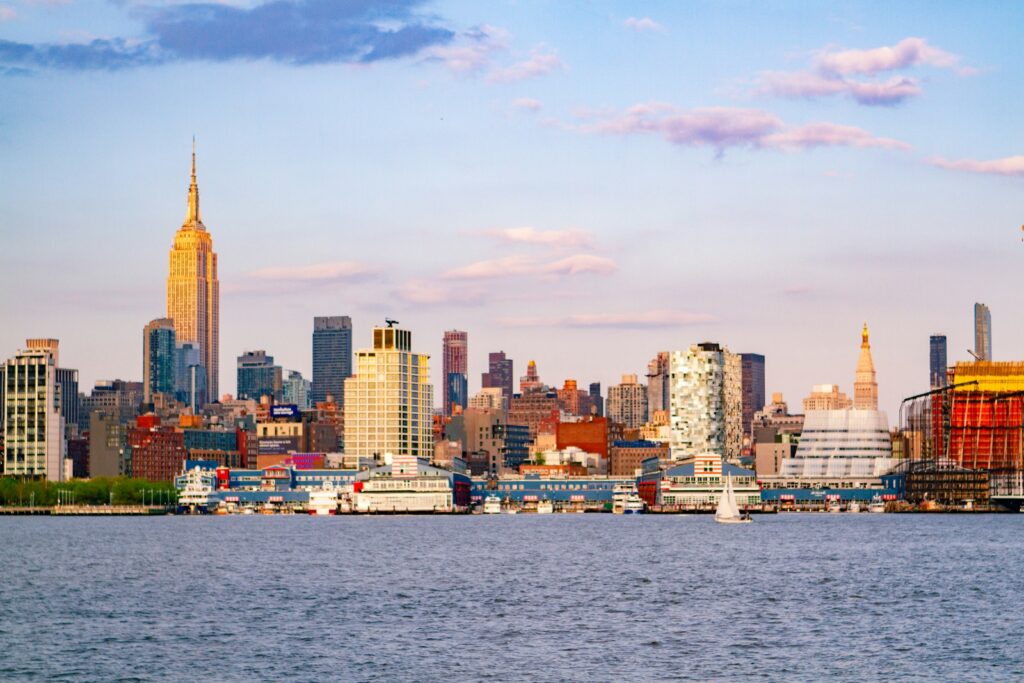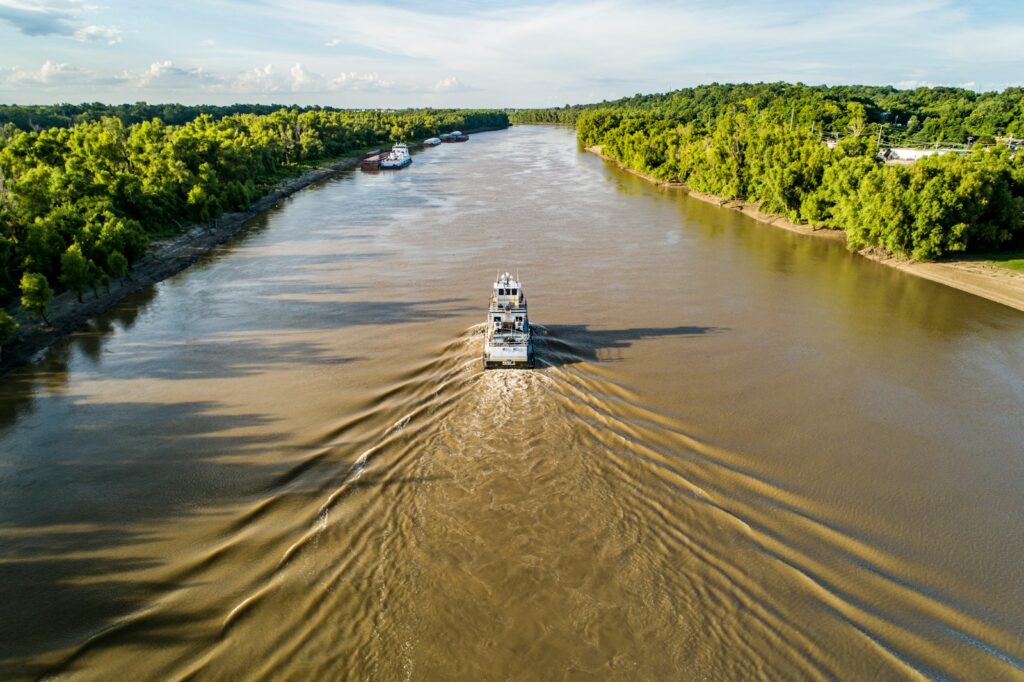Flooding is one of the most common and costly natural disasters in the United States, affecting communities across both coastal and inland regions. With changing climate patterns, heavier rainfall, and rising sea levels, flood risks have grown more unpredictable and widespread. Some states face repeated devastation due to geography and population density, making preparedness a constant priority. Knowing which areas are most vulnerable helps residents, local governments, and builders plan more effectively. From storm surges and river overflows to flash floods, these states represent the highest-risk areas where awareness and early preparation are essential for safety and long-term resilience.
1. Florida

Florida tops the list due to its extensive coastline, flat terrain, and exposure to tropical storms. Hurricanes frequently bring storm surges and heavy rainfall that cause widespread flooding across urban and rural areas. Low-lying communities and aging drainage systems heighten the risk. The state has invested heavily in flood management, but rising sea levels continue to threaten coastal infrastructure. Residents are encouraged to elevate homes, maintain flood insurance, and follow evacuation plans. With water surrounding nearly every region, Florida remains one of the most flood-prone states in the country, demanding constant vigilance and adaptation.
2. Louisiana

Louisiana is known for its vulnerability to severe flooding, especially in areas below sea level. The state’s proximity to the Gulf of Mexico exposes it to frequent hurricanes and heavy rainfall. New Orleans, in particular, faces high flood risks due to subsidence and its dependence on levees. Despite improvements after Hurricane Katrina, storm surges continue to test flood control systems. Wetlands that once acted as natural barriers have also diminished over time. Residents remain proactive with preparedness measures such as elevating structures and improving drainage, but Louisiana continues to battle significant flood threats year after year.
3. Texas

Texas experiences diverse types of flooding, from coastal surges along the Gulf of Mexico to flash floods in central regions. Rapid urban growth in cities like Houston has increased runoff and overwhelmed stormwater systems. Heavy rain events, tropical storms, and hurricanes frequently cause rivers to overflow, damaging homes and roads. Texas has invested in large-scale infrastructure improvements, including reservoirs and retention basins, yet unpredictable weather patterns remain a challenge. Awareness campaigns and updated flood mapping aim to keep communities informed. Despite these efforts, Texas continues to face recurring flood hazards that affect millions of residents annually.
4. California

California’s flood risks stem from a mix of mountain snowmelt, atmospheric rivers, and coastal storms. Although the state is known for drought, sudden heavy rains can trigger severe flooding, especially in low-lying areas and near major rivers. The Central Valley is particularly vulnerable due to its expansive agricultural land and outdated levee systems. In recent years, climate change has intensified rainfall events, overwhelming existing flood control structures. California’s emergency services continue to enhance flood management through early warning systems and sustainable water infrastructure, but the state remains highly exposed to seasonal flooding and storm-driven events.
5. New Jersey

New Jersey faces increasing flood risks due to its coastal geography and urban density. The state’s proximity to the Atlantic Ocean makes it vulnerable to storm surges and tidal flooding, especially during hurricane season. Inland rivers also overflow during heavy rainfall, impacting suburban neighborhoods. Following Hurricane Sandy, major improvements were made to flood defenses, yet many communities still struggle with repetitive flooding. Sea level rise continues to exacerbate the problem, putting coastal infrastructure at constant risk. Residents are encouraged to strengthen property resilience through floodproofing and emergency planning to reduce potential damage from future flood events.
6. New York

New York’s flood hazards are influenced by both coastal storms and inland river flooding. Coastal areas like Long Island and New York City experience tidal surges during hurricanes, while upstate regions deal with heavy rain and snowmelt runoff. Urbanization intensifies flooding as storm drains become overwhelmed during extreme weather. Since Hurricane Sandy, significant investments have been made in seawalls, drainage upgrades, and flood-resilient building codes. However, changing climate conditions continue to increase rainfall intensity. Awareness campaigns and improved emergency coordination help minimize risk, but New York remains among the states most exposed to flooding threats each year.
7. North Carolina

North Carolina frequently experiences flooding from hurricanes and tropical storms that move inland from the Atlantic. Coastal plains and river valleys are particularly susceptible to prolonged inundation. The state’s complex river systems, combined with increased development in flood-prone areas, have worsened the impact of storms. Efforts to improve flood control through updated infrastructure and stronger building standards are ongoing. North Carolina’s emergency management teams emphasize preparedness, urging residents to maintain flood insurance and follow evacuation protocols. With recurring extreme weather events, the state continues to rank high for its exposure to dangerous flood conditions.
8. South Carolina

South Carolina faces recurring flooding due to tropical storms, hurricanes, and rising tides. Coastal cities such as Charleston often experience nuisance flooding even during moderate rainfall because of poor drainage and rising sea levels. Inland areas are not immune, as rivers overflow after extended storms. State officials have focused on resilience planning, including elevating infrastructure and restoring wetlands to absorb excess water. Community awareness programs also play a vital role in preparedness. Despite these measures, South Carolina continues to experience significant flood challenges that affect homes, transportation systems, and local economies each year.
9. Mississippi

Mississippi’s flood risks come from both the Gulf Coast and the mighty Mississippi River. Heavy rains and hurricanes cause riverbanks to overflow, resulting in the inundation of farmlands and towns. Low-lying areas, especially in the Delta region, face chronic flooding due to poor drainage. The state has worked to improve levees and flood forecasting systems, yet unpredictable weather patterns remain a concern. Community resilience efforts focus on educating residents and enhancing infrastructure. With its combination of coastal storms and inland flooding, Mississippi continues to experience some of the nation’s most severe and persistent flood hazards each year.
10. Arkansas

Arkansas frequently experiences flooding due to heavy rains and swollen rivers, particularly along the Arkansas and Mississippi Rivers. Its diverse terrain means that both lowland and mountainous regions are susceptible to flash floods. Intense storms often cause rapid rises in water levels that catch communities off guard. The state invests in floodplain management and early warning systems to help reduce risks. Despite these efforts, rural areas often struggle with limited resources for recovery. For Arkansas residents, preparation and awareness are key, as flooding remains one of the most frequent and damaging natural threats across the state.
11. Alabama

Alabama faces frequent flooding due to heavy rainfall, tropical storms, and river overflows. The state’s geography, with numerous rivers and low-lying coastal areas, makes it especially vulnerable. Communities along the Gulf Coast often endure storm surges, while inland areas deal with flash floods after severe thunderstorms. Urban development has also increased runoff in cities, straining drainage systems. Alabama’s emergency agencies continuously enhance flood mapping and warning systems to protect residents. Despite these initiatives, climate change and unpredictable weather continue to raise concerns. Consistent preparedness, proper infrastructure maintenance, and public awareness remain vital to minimizing flood-related damages statewide.
12. Georgia

Georgia experiences flooding from coastal storms, tropical systems, and inland river rises. The Chattahoochee and Savannah Rivers often overflow during extended rain periods, affecting both rural and urban communities. Low-lying coastal cities such as Savannah are also prone to tidal and storm surge flooding. Heavy rainfall events have become more frequent, overwhelming outdated drainage infrastructure. State officials have invested in improved flood control projects, but continued development in high-risk zones remains a challenge. For Georgians, understanding local flood risks and maintaining flood insurance are crucial steps in reducing vulnerability to both seasonal and sudden flood events.
13. Virginia

Virginia’s flood hazards arise from coastal storms, hurricanes, and rainfall-driven river floods. The Chesapeake Bay and coastal areas face regular tidal flooding, worsened by sea level rise. Inland, mountain runoff and heavy storms contribute to flash flooding in valleys. Urban regions such as Norfolk experience frequent water accumulation that disrupts transportation and property. The state has implemented resilience strategies, including shoreline restoration and infrastructure upgrades, to combat the effects of rising tides. Despite these efforts, Virginia’s combination of coastal exposure and unpredictable rainfall continues to make flooding a significant concern for many communities.
14. Maryland

Maryland’s location along the Chesapeake Bay and Atlantic coast puts it at constant risk of flooding. Tidal surges, heavy rainfall, and hurricanes frequently affect both coastal and inland communities. Baltimore and Annapolis often experience flash floods due to overwhelmed drainage systems. Statewide resilience programs aim to reduce vulnerability through improved planning and flood-resistant development. Environmental restoration projects also help protect wetlands that naturally absorb excess water. However, increasing sea levels and urbanization continue to strain flood defenses. Maryland remains proactive in its efforts, emphasizing community preparedness and sustainable flood management to safeguard homes and infrastructure.
15. Illinois

Illinois faces flooding mainly from the Mississippi, Illinois, and Ohio Rivers. Prolonged rains and rapid snowmelt often cause these rivers to overflow, impacting farmlands and nearby towns. Flash floods also occur in urban areas when drainage systems reach capacity. The state has taken major steps to modernize levees and improve early warning systems. However, with unpredictable weather patterns, heavy rainfall events are becoming more common. Residents are encouraged to stay alert during storm seasons and follow emergency advisories. Illinois continues to focus on long-term floodplain management to minimize property damage and protect public safety.
16. Missouri

Missouri frequently experiences severe flooding along the Mississippi and Missouri Rivers. Spring rains, snowmelt, and heavy storms contribute to recurring flood events that affect farmland, highways, and communities. Flooding has caused billions in damage over the years, prompting ongoing investments in levee reinforcement and river management. Urban flooding has also increased as cities expand. Emergency agencies prioritize preparedness through updated flood forecasts and community education. Despite these efforts, Missouri’s geography makes it particularly susceptible to river overflow, requiring constant monitoring and coordinated disaster response to protect residents and reduce future flood impacts.
17. Kentucky

Kentucky’s rolling terrain and extensive river systems make it prone to flash flooding, especially after heavy rainstorms. The Appalachian region is particularly vulnerable as water rapidly flows through narrow valleys, often damaging homes and roads. The Ohio River also poses risks of long-term flooding for communities along its banks. In recent years, record rainfall has led to catastrophic events, prompting the state to strengthen its emergency management and infrastructure planning. Residents are encouraged to remain alert and prepared during severe weather seasons. Kentucky continues to focus on flood resilience to protect lives and property statewide.
18. Tennessee

Tennessee experiences a mix of flash floods and river flooding due to frequent thunderstorms and prolonged rainfall. The Cumberland and Tennessee Rivers are major contributors to recurring flood events. Urban areas such as Nashville have faced significant flooding in past decades, leading to ongoing investments in stormwater systems and green infrastructure. The state’s varied landscape, including mountainous and low-lying areas, increases runoff during storms. Community awareness programs and improved forecasting have enhanced preparedness, yet unpredictable weather remains a challenge. Tennessee continues to emphasize resilience and proactive flood management to reduce risks and safeguard communities across the state.
Comments